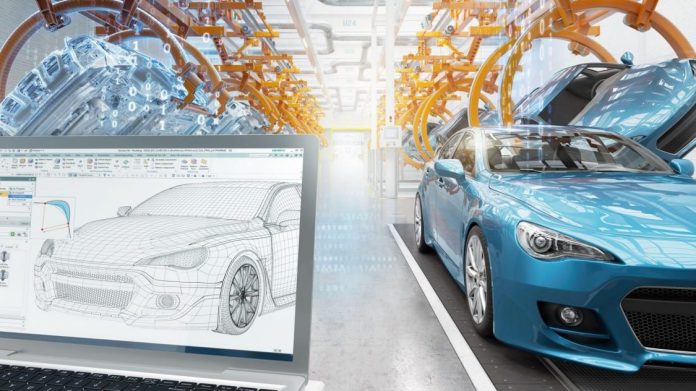Cars featured about 10 million lines of software code a decade ago; they will have closer to 500 million lines of code by the time they drive themselves, some time after 2030. That was the line from Bosch, this week, as it set out the rationale behind a major restructuring to forge a new automotive software division, selling ‘cross-domain computing solutions’, to keep its position at the head of the supply grid in the race for electric and autonomous mobility.
Bosch is not the only German industrialist to announce a rejig this week, designed to go full tilt at the broad Industry 4.0 market, across the supply and application of connected and autonomous machinery. Siemens, the country’s other blue-riband supplier of industrial gadgetry, confirmed shareholders have approved the spin-off of its energy business. The mothership, left behind, will focus on ‘digital industries, smart infrastructure and mobility’, it said, in a move designed to “unleash Siemens’ full potential.”
The moves reflect both their authors’ specialisms and generalisms. Bosch portrays itself as the leading supplier of automotive components, within a wider roster of complementary industrial solutions, all of which are getting the digital treatment, as per the Industry 4.0 handbook. Its twin automotive software and electronics units have therefore been united in a single division, with 17,000 ‘cross-domain computing’ staff, spread across 40-odd locations in 20-odd countries.
The market for “software-intensive electronic systems” will grow by 15 percent annually from here out, it says – or to 2030, anyway, when its forecast times-out. From next year, automotive customers will get both vehicular electronics and vehicular software from a single source, instead of from discrete units, as is the case, typically.
Stefan Hartung, chairman of the company’s mobility solutions division, said: “Only a company with wide-ranging electronics and software expertise will be in a position to shape the future of mobility. Bosch is an automotive electronics pioneer. For quite some time now, it has also been a software company. In the future, our new division is predestined to make further progress in the digitalization of vehicles.”
For Siemens, the decision to list Siemens Energy allows it to put focus squarely onto its developing Industry 4.0 interests, covering a 2.0 version of its core automation discipline, separately of its more specialist supply of gas, steam, and wind turbines, along with generators, transformers, compressors, and related gubbins. “This step paves the way for the establishment of an independent company rigorously focused on the energy sector. In the future, Siemens will concentrate on digital industries, smart infrastructure and mobility,” it put it plainly, in a statement.
Listing of the 28.8 billion power unit goes live on September 28; Siemens will offer 55 percent to shareholders, and expects to reduce its remaining position within 12 to 18 months. Joe Kaeser, president and chief executive at Siemens, said: “The spin-off enables us to build two focused companies, both of which will be strong players in their respective sectors”.
Siemens has form, of course; it spun-off Siemens Healthineers (Siemens Healthcare) via an initial public offering in 2018, raising €4.2 billion. Jim Hagemann Snabe, chairman of the supervisory board at Siemens, said: “The spin-off can unleash Siemens’ full potential. Approval by the shareholders confirms our view and lays the basis for the optimal setup of the two future Siemens companies. The substantial increase in the share price of Siemens Healthineers since its IPO is a gratifying example of how focus adds value. I’m looking forward to the successful future of the Siemens companies.”
For Bosch, which pooled the electronics manufacturing activities of its mobility solutions unit in April, the goal is to reduce the complexity of automotive engineering, as on-board computing systems become more powerful. Five hundred million lines of code is a lot, it restated; a million lines of code fits on 18,000 printed pages. The new unit has been assigned software, electrical, and electronics engineers to cover driver assistance, automated driving, car multimedia, powertrain, and body electronics.
Bosch is already investing €3 billion per annum on automotive software. The new unit will develop both the software on which the vehicle computers and control units are based and the software for vehicle functions ranging from park-assist and lane-keeping support systems to music streaming. The result will be the much faster release of new functions, brought to users by software updates. This will allow automakers to offer their customers a coherent, integrated driving experience.
Harald Kroeger, also from Bosch’s mobility solutions unit, has been placed in charge of the new automotive software division. Kroeger said: “Software will play a crucial part in determining a vehicle’s features and feel in the future. It will help make cars ever more intelligent, and provide drivers with a tangible benefit. Supplying software from a single source is our response to the enormous challenge of making cars ever more digitalized.
“Today’s premium vehicles feature more than 100 individual control units, and even compact vehicles have between 30 and 50. Such powerful computers will allow us to significantly reduce these numbers. The dynamic shift toward ever more digitalization in the vehicle will crucially determine the shape of the new division. Our new set-up will allow us to satisfy new requirements – both of the market and our customers – even better.

